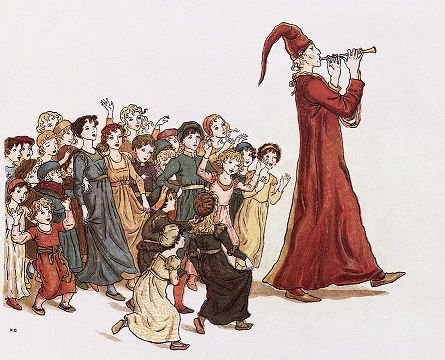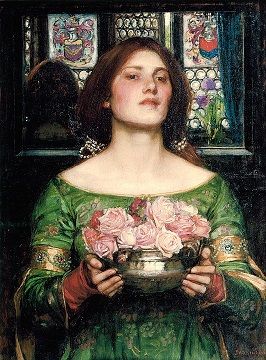Tune of the Times: Sound as Metaphor in Hamlet
As part of my steemit educational series, I am posting my previously written papers from earning my Bachelors in English Education and my Masters in Education Administration. This paper was written during my bachelors, as part of my class dedicated to Shakespeare. This was probably my favorite class in my college career- the teacher was super engaging, and I fell in love with Shakespeare in a way that all of my high school teachers never managed. Hamlet is one of my favorite tragedies, and I currently teach it as part of the 10th grade curriculum.
Our senses are universal. Effective authors appeals to audiences through sight, smell, touch, and hearing in order to reach audiences across unimaginable time and space. Hundreds of years from now, the human race is certainly going to have eyes and ears. Shakespeare would not be applicable to the modern world if he didn’t appeal to an audience’s audition. In Shakespeare’s Hamlet, music and sound play multiple roles. Hamlet often uses music metaphors to describe his and other characters relationships to fate and each other. Shakespeare also uses auditory metaphors to emphasize the madness of a person or situation in Hamlet, forcing the audience to draw personal conclusions about the disharmony of madness and death to sanity and life.
The turning points in Hamlet’s relationships with other characters are punctuated with musical references. As his bonds with Gertrude and Ophelia deteriorate, the musical references reflect the cacophony of his mental deterioration on everyone around him. The only relationship that doesn’t deteriorate is that with Horatio, and the metaphors that surround their conversations expose more about Hamlet than Horatio.
Hamlet’s feelings toward Horatio and fate are revealed through music metaphors. In 3.2.69-72, Hamlet tells Horatio:
…That they are not a pipe for Fortune’s finger
To sound what stop she please. Give me that man
That is not passion’s slave, and I will wear him
In my heart’s core, ay, in my heart of heart,
as I do thee.
Hamlet personifies Fate as a figure similar to the pied piper. The characters of the play are helpless in the face of her “tune”, and have no free will as she leads them to their doom. This reveals that Hamlet considers himself a victim of fate and circumstance in comparison to Horatio. The fact that these characters are not only slaves of fate, but of their own passions, also leads one to believe that Hamlet feels that this succumbing to fate is a personal failing. It is possible that this is one reason it takes Hamlet so long to take his revenge on Claudius; He sees Claudius as a casualty of “Fortune’s pipe” and his own greed, which led him to kill senior Hamlet. So in Hamlet’s eyes, Claudius is not solely to blame for the king’s death, and possibly could not be held responsible, just as Hamlet does not consider himself responsible for distancing himself from Ophelia, and her subsequent madness.

Source
The relationship between Ophelia and Hamlet is hinted at, but nothing definitive is ever said. During the first two acts, Ophelia talks to her family about Hamlet, but Hamlet does not talk to anyone about Ophelia. Both overprotective father and adoring brother warn her to “weigh what loss your honor may sustain/ If with too credent ear you list his songs” (1.3.29-30). According to Sharon Hamilton in Shakespeare’s Daughters, “…in listening with too credent ear to this song, Ophelia loses not only honor but sanity.” (82). It is not until the third act that Ophelia and Hamlet are on stage together, and then Hamlet famously tells her “To a/ nunnery, go.” (3.1.151-2). Ophelia obviously admires him. She calls him a “noble mind” (3.1.53) and takes responsibility for his madness, claiming that she “…sucked the honey of his music vows”. It is possible that Hamlets seduction of Ophelia, shown in the letter as read by Polonius in 2.2.108-124 and later dismissed by Hamlet when he tells her “I loved you not” (3.1.120) was a mere whim. Hamlet brushes Ophelia off as though she distracts him from taking his revenge. But if she believed that he loved her, and that he was made mad because of her rejection of him, then her madness could have come from wanting to be closer to Hamlet, or because of Hamlet’s treatment of her. Before the showing of the “Mousetrap”, Hamlet appears to torment Ophelia with sexual innuendo:
HAMLET. Lady, shall I lie in your lap?
OPHELIA. No, my lord.
HAMLET. I mean, my head upon your lap?
OPHELIA. Ay, my lord.
HAMLET. Do you think I meant country matters?
OPHELIA. I think nothing, my lord.
HAMLET. That’s a fair thought to lie between maids’
legs. (3.2.110-17)
By the next act Ophelia is mad. When she relates his insanity to “…sweet bells jangled out of tune and harsh… ” (3.1.161) the lady unwittingly foreshadows her own crooning madness. Ophelia’s insanity as portrayed through her songs seems to stem from both her fathers death and Hamlet’s double-edged rejection. As she enters the room in 4.5, she asks “Where is the beauteous majesty of Denmark?” (21), which could refer to Hamlet. From there, she sings of true love, also supposedly referring to Hamlet, but true to the nature of crazies, she confuses him with her father, claiming Hamlet/Polonius is “dead and gone” (29). Ophelia’s mad singing makes honest statements about societal wrongs against women that would not be acceptable if spoken by a sane character on the Elizabethan stage. Powerful men could easily dismiss the accusation of hypocrisy in the lyrics “...‘Before you tumbled me/ You promised me to wed.’/ He answers: “‘So would I ha’ done, by yonder sun,/ An thou hadst not come to my bed’” (4.5. 63-67) because Ophelia is mad. But any audience familiar with Shakespeare’s work would recognize that he uses fools and madmen (or madwomen) to speak the wisest and truest lines. Not only do the lyrics criticize society, but the manner in which she sings them is unusual: “To gain some sense of the disturbing social and moral incongruity of the collage, it might help to imagine something like the daughter of a prominent politician walking into a formal reception hosted by her father and bursting into gangsta rap or a version of ‘Voulez-vous coucher avec moi ce soir?’ (Johnson 262). To an Elizabethan audience, Ophelia’s madness and singing is culturally inappropriate and creates a discomfort between societal norms, showing the something is truly “rotten” in Denmark. Not only does Ophelia drive the plot and act as a foil to Hamlet’s madness, but by her very songs she demonstrates the twining of life and madness, where true sanity can only be obtained through death.

Source
Hamlet’s argument with Gertrude and the ghost’s visitation is a turning point for the question of Hamlet’s sanity. Their relationship and his mistrust of her are decayed to the point of violence. In 3.4.22-30, Gertrude asks Hamlet if he intends to murder her, and he murders Polonius instead, feebly claiming he was a rat, but hoping to have killed Claudius. The painful discord of their strained bond is evident in the references to sound that Gertrude makes. Her bedroom is probably one of the quietest scenes in the play, compared to sounding trumpets and the wild party after Claudius is made king. Even the sound of Polonius dying in the background cannot compete. Yet despite the quiet, Hamlet’s passion and anger towards Gertrude lead her to ask him “What have I done, that thou dar’st wag thy tongue/ In noise so rude against me?” (3.4.42) and then “Ay me, what act,/ That roars so loud and thunders in the index?” (3.4.53). Hamlets anger is not only leading him to yell at Gertrude, but it’s causing Gertrude to question his control over himself when he cannot control the noises he makes. Then the ghost appears, and to Gertrude, Hamlet appears certainly mad. She cannot see, or more importantly hear, the ghost, and therefore Hamlet must be hallucinating. The fact that the audience is privy to Hamlet’s hallucination forces them to question their own sanity, and the relation of the play to their reality. The audience seeing the ghost shows them how desperate and alone Hamlet is in his situation. When Hamlet realizes that Gertrude is unsure of him, he tells her “My pulse as yours doth temperately keep time,/ And makes as healthful music. It is not madness/ That I have uttered” (3.4.147-49). His denial of madness makes him seem even more mad to his mother, and possibly scares her into telling Claudius everything, even though she promised Hamlet that she would not.
The idea that your ears can fool you into believing something that is not true is an important one in theatre. By using objects to create sound effects that mimic thunder and lightening, or disembodied voices, the playwright’s illusion becomes that much more believable for the audience. In Hamlet, the ability of the senses to trick you can be compared to the way that over thinking keeps Hamlet from enacting his revenge. If a person can trust neither his logic, his senses, nor his loved ones, what does that person have? Naught but “silence” (5.2.360) for themselves, while the living continue on with “soldiers’ music” (5.2.401).

Source
Between the mistrust of the senses, strained relationships between characters, and inactive logic, the use of music heightens the sense of chaos within the play and makes the tragedy far more tragic. Fates plays the characters like badly tuned violins, creating a play that is not only beautiful, but makes the audience question the balances between life and death, madness and sanity, fate and free will, and harmony and discord.
Hamilton, Sharon. Shakespeare’s Daughters. McFarland & Co Inc Pub, 2003. Print.
Johnson, Bruce. “Hamlet: voice, music, sound” Popular Music, 24, p257-267. 2005 Web. April

Images are sourced from Pixabay
Words are property of Sunravelme